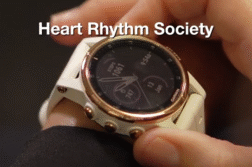SALT LAKE CITY, Utah. (Ivanhoe Newswire) – More than 36 million people are admitted into hospitals in the U.S. each year. That’s an average of almost 100,000 people each and every day. And this comes as the country faces a nursing shortage. That’s where smart rooms come in. Hospitals are now implementing cutting-edge technology to improve patient care and safety, while giving nurses more time to do what they are trained to do — helping patients.
Matthew Edwards was a gymnast growing up and had a horrific accident.
“I had jumped into a foam pit that I thought was deeper. Turned out to be really shallow. I kind of over rotated and landed on my neck and fractured my vertebrae,” he painfully recalls.
Edwards’ world has been confined to a hospital room for the last few months. But this hospital room is giving him something he didn’t have before.
Dr. Jeffrey Rosenbluth, of the Neilsen Rehabilitation Hospital at the University of Utah, says, “Every single piece of control that you give back to someone who’s lost it is really important for every aspect of their life.”
Dr. Rosenbluth and his team are behind the world’s first smart hospital rooms — rooms where the patient can control everything from the lights, the temperature, the TV, the bed, the blinds, and more.
“If I’m paralyzed and I’m going with my wheelchair up to the door, well, I can’t open the door by myself, but I can maybe talk to my device and say, ‘Hey, open the door.’,” explains registered nurse of the Neilsen Rehabilitation Hospital at the University of Utah, Damaris Zarco.
Patients have complete control of their surroundings by using their voice, touch, breath, eye gaze, or head movements.
James Gardner, IT manager at the same facility, says, “We can cater the app to any level of functioning.”
One study found that implementing smart room technology reduced the time nurses spent on documentation by an average of 24 minutes per shift.
Zarco adds, “Patients would call just to have the blinds closed or the temperature adjusted in the room, but because they’re able to do that with the app, then it saves me a trip to the room.”
“There are people in those rooms that are on ventilators that can’t move a single part of their body, that are now able to operate every aspect of that room,” Dr. Rosenbluth emphasizes.
The Journal of Nursing Care reports that using smart room technology to automate medication dispensing reduced medication errors by 78 percent.
Contributors to this news report include: Marsha Lewis, Producer; Roque Correa, Videographer & Editor.
To receive a free weekly e-mail on medical breakthroughs from Ivanhoe, sign up at: http://www.ivanhoe.com/ftk
Sources:
https://www.aha.org/statistics/fast-facts-us-hospitals
HIMSS Analytics 20017
MEDICAL BREAKTHROUGHS
RESEARCH SUMMARY
TOPIC: SMART ROOMS: GIVING PATIENTS CONTROL WHEN THEY NEED IT THE MOST
REPORT: MB #5206
BACKGROUND: Employee burnout, an aging population and a lack of training, states across the country are facing a familiar and common problem: a nursing shortage. Even before the COVID-19 pandemic began to unfold at the start of 2020, a gap existed between the supply of registered nurses and the demand for them. The COVID crisis only helped widen that gap. A U.S. Department of Health and Human Services study projected that the demand for registered nurses would hit more than 3.6 million by the year 2030. The field would have needed to add nearly 50,000 new registered nurses each year, on top of the existing workforce, since 2014 to meet that demand.
DIAGNOSING: Patients with prolonged hospitalizations account for 14% of all hospital days in US hospitals, but predicting which medical patients are at risk for prolonged hospitalizations would allow early proactive management to reduce their length of stay in hospital rooms. Prolonged hospitalizations are increasing in hospitals nationwide. A study found patients with hospitalizations over 21 days represented only 2% of hospitalizations, but approximately 14% of hospital days and cost over $20 billion dollars annually. Prolonged hospitalizations strain hospital capacity, and with market consolidation, prolonged hospitalizations disproportionately affect in particular urban academic centers.
(Source: https://www.ncbi.nlm.nih.gov/pmc/articles/PMC7444462/)
NEW TECHNOLOGY: Hospital smart rooms are disrupting traditional patient room designs along with transforming the traditional patient experience. Hospitals invest heavily in technology to meet regulatory requirements and to provide higher levels of care and now hospitals also are putting significant financial and IT staff resources into platforms like admission, discharge and transfer (ADT) systems; food service software; building automation systems/HVAC systems; housekeeping platforms; and nurse call capabilities. In a traditional hospital room, the nurse call button is the lifeline to the patients’ every need – food orders, temperature changes, housekeeping and miscellaneous requests – and, of course actual patient care needs. If you factor in fewer calls to staff for dining menus or for blankets, or for other comfort requests made possible by an integrated smart room solution, the positive impact to nurses’ workload is clear.
(Source: https://sentrics.net/blog/5-things-to-know-about-hospital-smart-rooms/)
FOR MORE INFORMATION ON THIS REPORT, PLEASE CONTACT:
Kylene Metzger
If this story or any other Ivanhoe story has impacted your life or prompted you or someone you know to seek or change treatments, please let us know by contacting Marjorie Bekaert Thomas at mthomas@ivanhoe.com




